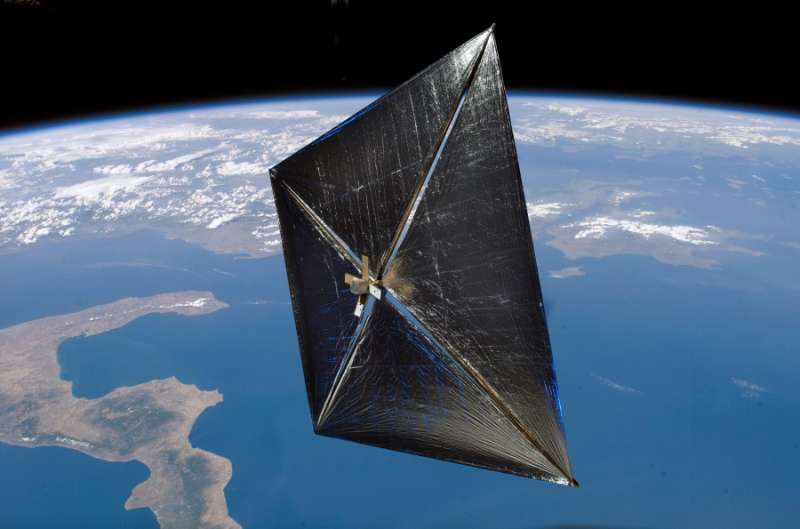Credit & Copyright: courtesy NASA
Explanation:
Featured in this artist's illustration,
NASA's NanoSail-D
finally unfurled a very thin, 10 square meter reflective
sail on January 20th, becoming the first solar sail spacecraft
in low Earth orbit.
Often considered the
stuff
of science fiction, sailing through space
was suggested 400 years ago by
astronomer Johannes Kepler
who observed comet tails blown by the solar wind.
Modern solar sail
spacecraft designs, like NanoSail-D or the Japanese interplanetary
spacecraft IKAROS, rely on the small but
continuous
pressure from sunlight itself for thrust.
Glinting in the sunlight as it circles planet Earth, the NanoSail-D
solar sail will periodically be bright and easily
visible to the eye.
In fact, skygazers are urged to participate in an ongoing
contest to capture images
of NanoSail-D.
The images will help NASA monitor the satellite before it reenters
the atmosphere in April or May.
1999 2000 2001 2002 2003 2004 2005 2006 2007 2008 2009 2010 2011 2012 2013 2014 2015 2016 2017 2018 2019 2020 2021 2022 2023 2024 2025 |
Январь Февраль Март Апрель Май Июнь Июль Август Сентябрь Октябрь Ноябрь Декабрь |
NASA Web Site Statements, Warnings, and Disclaimers
NASA Official: Jay Norris. Specific rights apply.
A service of: LHEA at NASA / GSFC
& Michigan Tech. U.
|
Публикации с ключевыми словами:
spacecraft - solar wind - космические аппараты - Солнечный ветер - солнечный зайчик - Солнечный парус
Публикации со словами: spacecraft - solar wind - космические аппараты - Солнечный ветер - солнечный зайчик - Солнечный парус | |
См. также:
Все публикации на ту же тему >> | |
